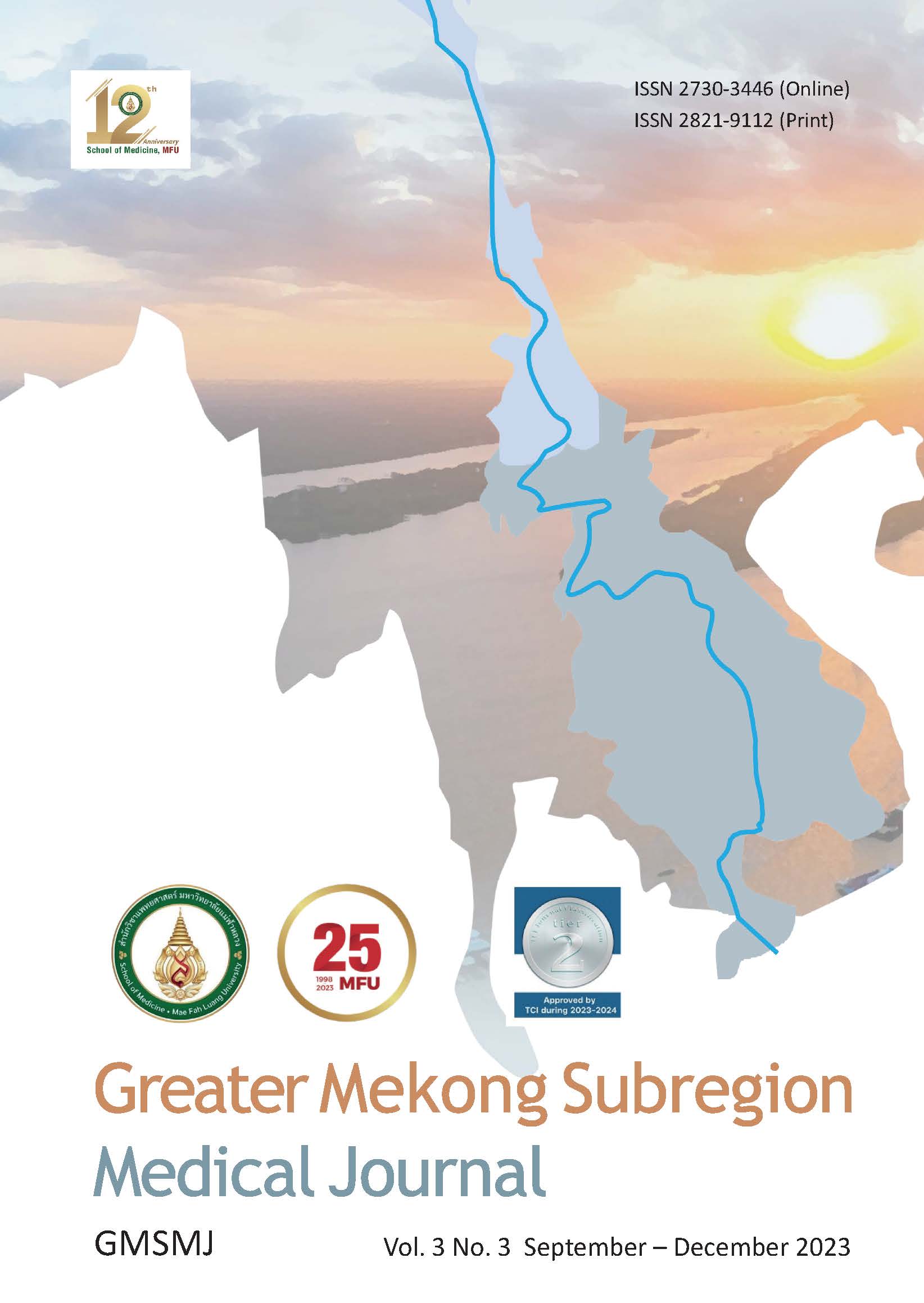Computer-based Renal Sonographic Image Analysis of Renal Progression among Patients with Chronic Glomerulopathies
Keywords:
Renal ultrasound, Computer-based image analysis, CKD progressionAbstract
Background: Renal sonography is a useful diagnostic imaging procedure already used in chronic glomerulopathies (CGN). Quantitative renal echogenicity has not been formerly evaluated in regard to its capacity to identify patients at risk for progressive renal disease.
Objective: The study aimed to predict renal progression using computer-based image analysis of renal sonographic findings and to explore association between renal sonographic findings and renal histopathologic indices.
Method: Renal sonography was performed on 37 patients with CGN undergoing renal biopsy. Sonographic images were processed and analyzed using computer programs to determine quantitative renal cortical echogenicity. Patients were followed up over a 3-month period to evaluate renal progression correlated with estimated glomerular filtration rate (GFR).
Results: Among patients with CGN undergoing renal biopsy, total renal cortical echogenicity and long axis echogenicity were significantly higher in those patients with renal progression. Using multivariable analysis, high renal echogenicity showed significant association with increased risk of worsening renal function among patients with CGN (HR 1.13, 95%CI 1.01-1.25). Long axis renal echogenicity (AUC 0.71; 95%CI 0.52-0.89), combined with other findings (AUC 0.93; 95%CI 0.84-1.00) achieved a better score predicting CKD progression in the CGN group. Furthermore, renal to liver echogenicity ratio correlated significantly to interstitial fibrosis and tubular atrophy. Renal/liver echogenicity ratio (AUC 0.83; 95%CI 0.69 to 0.97), combined with other findings (AUC 0.95; 95%CI 0.88 to 1.00), achieved a perfect score predicting IFTA > 50% in the CGN group.
Conclusion: Quantitative renal cortical echogenicity using computer-based image analysis might be a useful tool to identify patients with CGN and renal progression related to renal fibrosis
References
Yaprak M, Cakir O, Turan MN, Dayanan R, Akin S, Degirmen E, et al. Role of ultrasonographic chronic kidney disease score in the assessment of chronic kidney disease. Int Urol Nephrol. 2017; 49 (1):123-31. https://doi.org/10.1007/s11255-016-1443-4
Khati NJ, Hill MC, Kimmel PL. The role of ultrasound in renal insufficiency: the essentials. Ultrasound Q. 2005; 21 (4): 227-44. https://doi.org/10.1097/01.wnq.0000186666.61037.f6
Lucisano G, Comi N, Pelagi E, Cianfrone P, Fuiano L, Fuiano G. Can renal sonography be a reliable diagnostic tool in the assessment of chronic kidney disease? J Ultrasound Med. 2015; 34 (2): 299-306. https://doi.org/10.7863/ultra.34.2.299
Takata T, Koda M, Sugihara T, Sugihara S, Okamoto T, Miyoshi K, et al. Left Renal Cortical Thickness Measured by Ultrasound Can Predict Early Progression of Chronic Kidney Disease. Nephron. 2016; 132 (1): 25-32. https://doi.org/10.1159/000441957
Hricak H, Cruz C, Romanski R, Uniewski MH, Levin NW, Madrazo BL, et al. Renal parenchymal disease: sonographic-histologic correlation. Radiology. 1982; 144 (1): 141-7. https://doi.org/10.1148/radiology.144.1.7089245
Moghazi S, Jones E, Schroepple J, Arya K, McClellan W, Hennigar RA, et al. Correlation of renal histopathology with sonographic findings. Kidney Int. 2005; 67 (4): 1515-20. https://doi.org/10.1111/j.1523-1755.2005.00230.x
Araújo NC, Rebelo MAP, da Silveira Rioja L, Suassuna JHR. Sonographically determined kidney measurements are better able to predict histological changes and a low CKD-EPI eGFR when weighted towards cortical echogenicity. BMC Nephrol. 2020; 21 (1): 123. https://doi.org/10.1186/s12882-020-01789-7
Chen C-J, Pai T-W, Hsu H-H, Lee C-H, Chen K-S, Chen Y-C. Prediction of chronic kidney disease stages by renal ultrasound imaging. Enterprise Information Systems. 2020; 14 (2): 178-95. https://doi.org/10.1080/17517575.2019.1597386
Levey AS, Stevens LA, Schmid CH, Zhang YL, Castro AF, 3rd, Feldman HI, et al. A new equation to estimate glomerular filtration rate. Ann Intern Med. 2009; 150 (9): 604-12. https://doi.org/10.7326/0003-4819-150-9-200905050-00006
Bajema IM, Wilhelmus S, Alpers CE, Bruijn JA, Colvin RB, Cook HT, et al. Revision of the International Society of Nephrology/Renal Pathology Society classification for lupus nephritis: clarification of definitions, and modified National Institutes of Health activity and chronicity indices. Kidney Int. 2018; 93 (4): 789-96. https://doi.org/10.1016/j.kint.2017.11.023
Miletic D, Fuckar Z, Sustic A, Mozetic V, Stimac D, Zauhar G. Sonographic measurement of absolute and relative renal length in adults. J Clin Ultrasound. 1998; 26 (4): 185-9. https://doi.org/10.1002/(SICI)1097-0096(199805)26:4<185::AID-JCU1>3.0.CO;2-9
Siddappa JK, Singla S, Al Ameen M, Rakshith SC, Kumar N. Correlation of ultrasonographic parameters with serum creatinine in chronic kidney disease. J Clin Imaging Sci. 2013; 3: 28. https://doi.org/10.4103/2156-7514.114809
Satirapoj B. Tubulointerstitial Biomarkers for Diabetic Nephropathy. J Diabetes Res. 2018; 2018: 2852398. https://doi.org/10.1155/2018/2852398
Liborio AB, de Oliveira Neves FM, Torres de Melo CB, Leite TT, de Almeida Leitao R. Quantitative Renal Echogenicity as a Tool for Diagnosis of Advanced Chronic Kidney Disease in Patients with Glomerulopathies and no Liver Disease. Kidney Blood Press Res. 2017; 42 (4): 708-16. https://doi.org/10.1159/000484105
Tsau YK, Lee PI, Chang LY, Chen CH. Correlation of quantitative renal cortical echogenicity with renal function in pediatric renal diseases. Zhonghua Min Guo Xiao Er Ke Yi Xue Hui Za Zhi. 1997; 38 (4): 276-81.
Chanlerdfa N, Chaiprasert A, Nata N, Tasanavipas P, Varothai N, Thimachai P, Inkong P, Kaewput W, Supasyndh O, Satirapoj B. Computer-based Renal Sonographic Image Analysis on Renal Progression among Patients with Chronic Glomerulopathies. Presentation at the American Society of Nephrology Renal Week, Orlando, FL, USA, November 2022: https://www.asnonline. org/education/kidneyweek/ 2022/program-session-details.aspx? sessId=435090.
Downloads
Published
How to Cite
Issue
Section
License
Copyright (c) 2023 Greater Mekong Subregion Medical Journal

This work is licensed under a Creative Commons Attribution-NonCommercial-NoDerivatives 4.0 International License.






